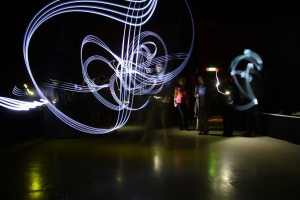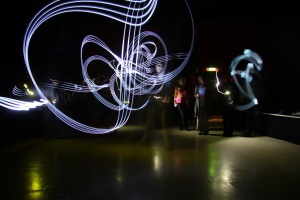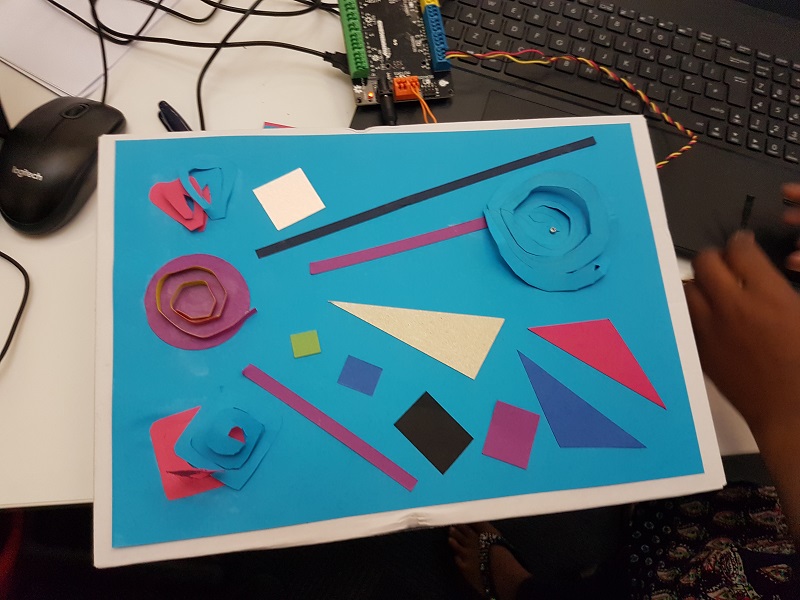
STEM into STEAM
BY: Alan Lynch
09 Nov 2015
The Cultural Learning Alliance recently organised an event called STEAM Hack. This 24 hour event, hosted in the Science Museum, London saw groups of leading scientists, artists and teachers come together create inspiring STEAM curriculums. As technology becomes increasingly important in education as well as the wider world, events like these are an important way of bringing together arts and STEM education. That’s why this week we’re exploring some exciting methods which have successfully combined the Arts with one or more STEM subjects!
What is STEAM?
 STEAM is a teaching approach aimed at placing Science, Technology, English, Arts and Mathematics at the heart of young people’s education. Ideally this will form part of a holistic model, meaning that students should be able to apply skills learned in one subject to any of the others. It builds on the idea of STEM education, which emphasises the importance of the other four subject areas without including arts.
STEAM is a teaching approach aimed at placing Science, Technology, English, Arts and Mathematics at the heart of young people’s education. Ideally this will form part of a holistic model, meaning that students should be able to apply skills learned in one subject to any of the others. It builds on the idea of STEM education, which emphasises the importance of the other four subject areas without including arts.
As the following examples have shown, however, that there is room for the arts to be included at the heart of education, and that they can work in partnership with STEM subjects.
Minecraft
Minecraft has been used to teach subjects across the curriculum, including in the arts. Microsoft recently launched a dedicated website to support teachers delivering lessons with Minecraft, and free copies of the game have been made available to every secondary school in Northern Ireland. Minecraft’s open-ended nature means that anything can be created in-game; it encourages the player to be creative. In that way it can be used as the tool to create an artwork. This flexibility also allows for the sort of relation between subjects which is necessary to move STEM into STEAM. For example, players can design a building or structure, but they need to apply mathematical or scientific knowledge to create it using the correct measurements and in-game resources.
Digital R&D Fund for the Arts
The Digital R&D Fund for the Arts is a fund which supports collaboration between the arts, technology providers and researchers. Their website lists the full range of projects which have benefitted from their funding, which demonstrates how broadly technology can be integrated within the arts. This range of projects – from building a toolset for creating interactive comics, to an app which turned a park into a digital gallery – is full of exciting ways that science and technology can be used artistically. Many of the projects supported by The Digital R&D Fund are adaptable for use in education and, similarly to Minecraft, combine different areas of STEAM in creative ways.
Coding
Coding is one notable area which has been integrated with the arts, and is relevant to STEAM education now that coding skills are being introduced into the curriculum as early as Key Stage 1. Sonic Pi: Live and Coding, for instance, saw music lessons taught using computer coding software. Lessons introduced young people to coding skills using Sonic Pi software, culminating in an event where these skills were used to perform their music live.
Another example of using coding to create art is DevArt, a collaboration between Google and The Barbican Centre which sought artists who created pieces using coding. Coding was used much in the same way as brush and canvas are used in painting. This formed part of The Barbican’s 2014 Digital Revolution exhibition, which featured art all created using different digital media.
STEAM Hack
We’ll close on STEAM Hack, an event which saw scientists, teachers and artists collaborate over 24 hours to come up with effective solutions and tools that could encourage interaction across STEAM subjects. Their results were presented to an audience on the morning of 29 October.
Ideas included:
- Object based learning. Taking simple objects such as a cabbage and applying it to different classes and teaching methods. Biology, chemistry, drawing, painting, fractals and even dance through pattern could all be arrived at in creative ways given resources put together by engaging and innovative teachers and practitioners
- Providing young people with a journal combining cross-curricular activities, enabling students and young people to make their own connections between subjects
- Using a communal garden as the basis for lessons in science, maths and English subjects as well as visual art, performing arts and photography
Turning STEM into STEAM
The examples listed here– and the ideas promoted at STEAM Hack – are only some of the ways that one or more STEM fields have successfully been integrated with the arts to showcase genuine artistic creativity, while still developing the more technical skills central to STEM areas. With the sort of collaboration across specialists that STEAM Hack encouraged we’ve seen that STEM can be turned into STEAM, ensuring a place for the arts at the heart of young people’s education.
Related posts
BY: Julie Neville
BY: Guest Writer
BY: Guest Writer




Comments & Replies